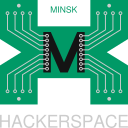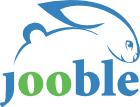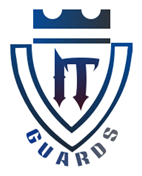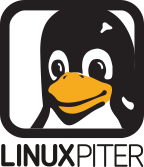| |
abstracts |
author |
view |
download |
| |
|
|
|
|
| |
|
|
|
|
 |
A look back at the history of free software and open source |
Andrej Shadura
 Slovakia, Bratislav Slovakia, Bratislav |
 |
slides |
| |
|
|
|
|
| |
|
|
|
|
 |
«Клиповое мышление» и универсальный инструмент создания интерактивных учебных материалов |
Сергей Чоповский, Алла Чоповская
 Львов, Ukraine Львов, Ukraine |
 |
slides |
| |
|
|
|
|
| |
|
|
|
|
 |
«Speed-up Solving Linear Systems on Parallel Architectures via Aggregation of Clans |
Dmitry Zaitsev
 Odessa, Ukraine Odessa, Ukraine |
 |
slides |
| |
|
|
|
|
| |
|
|
|
|
 |
Dark Background and Light Text — Firefox add-on |
Mikhail Khvoinitsky
 Minsk, Belarus Minsk, Belarus |
 |
slides |
| |
|
|
|
|
| |
|
|
|
|
 |
Software Generators of Petri Net Models |
Tatiana R. Shmeleva
 Odessa, Ukraine Odessa, Ukraine |
 |
slides |
| |
|
|
|
|
| |
|
|
|
|
 |
Опыт преподавания языка Ruby в рамках дисциплины «современные технологии разработки программного обеспечения» |
Максим Стержанов
 Minsk, Belarus Minsk, Belarus |
 |
slides |
| |
|
|
|
|
| |
|
|
|
|
 |
Case Study: Parallel Programming in Python with COMPSs |
Nikolay Zaitsev
 Odessa, Ukraine Odessa, Ukraine |
 |
slides |
| |
|
|
|
|
| |
|
|
|
|
 |
Openshift – Kubernetes with a human face |
Vadim Rutkovsky
 Brno, Czechia Brno, Czechia |
 |
slides |
| |
|
|
|
|
| |
|
|
|
|
 |
Applications of Finite State Machines |
Aleksey Cheusov
 Minsk, Belarus Minsk, Belarus |
|
slides |
| |
|
|
|
|
| |
|
|
|
|
 |
Running MySQL in Kubernetes |
Mykola Marzhan
 Kyiv, Ukraine Dmitriy Kostiuk Kyiv, Ukraine Dmitriy Kostiuk
 Minsk, Belarus Minsk, Belarus |
|
|
| |
|
|
|
|
| |
|
|
|
|
 |
Регистрация присутствия и биометрических данных пользователя по протоколу Bluetooth в GNU/Linux |
Alexandr Dubitsky
 Minsk, Belarus Minsk, Belarus |
 |
slides |
| |
|
|
|
|
| |
|
|
|
|
 |
Создание СХД с томами «тонкой» настройки на базе дистрибутива Linux |
Александр Клыга
 Minsk, Belarus Minsk, Belarus |
 |
slides |
| |
|
|
|
|
| |
|
|
|
|
 |
Создание пакетов программной поддержки для процессоров собственной разработки |
Роман Ставцев
 Russian Federation, Москва Russian Federation, Москва |
 |
slides |
| |
|
|
|
|
| |
|
|
|
|
 |
ZFS на базе проекта «ZFS on Linux» |
Александр Клыга
 Minsk, Belarus Minsk, Belarus |
 |
slides |
| |
|
|
|
|
| |
|
|
|
|
 |
Free software porting on the Elbrus architecture |
Andrew Savchenko
 Russian Federation, Moscow Russian Federation, Moscow |
 |
|
| |
|
|
|
|
| |
|
|
|
|
 |
Сизиф на Эльбрусе: следующая станция |
Михаил Шигорин
 Russian Federation, Москва Russian Federation, Москва |
 |
slides |
| |
|
|
|
|
| |
|
|
|
|
![APERTIS is a FOSS [Free and open source] GNU/Linux platform derivative from Debian/Ubuntu. Apertis has been started as OS for infotainment in automotive vehicles but nowadays it fits for a wide variety of electronic devices. In this talk I'll give an overview of Apertis itself and some key components, such as resilent OTA/offline OS updates based on `libostree` and Apertis update manager; Debos tool which allows creation of various Debian-based OS images in a quick and reproducible way; and an overview of used CI which is based on open-source components. APERTIS is a FOSS [Free and open source] GNU/Linux platform derivative from Debian/Ubuntu. Apertis has been started as OS for infotainment in automotive vehicles but nowadays it fits for a wide variety of electronic devices. In this talk I'll give an overview of Apertis itself and some key components, such as resilent OTA/offline OS updates based on `libostree` and Apertis update manager; Debos tool which allows creation of various Debian-based OS images in a quick and reproducible way; and an overview of used CI which is based on open-source components.](/images/ftypes/document-text-image.png) |
Apertis OS for embedded devices |
Denis Pynkin
 Minsk, Belarus Minsk, Belarus |
 |
slides |
| |
|
|
|
|
| |
|
|
|
|
 |
Modern strace |
Dmitry Levin
 Russian Federation, Москва Russian Federation, Москва |
 |
slides |
| |
|
|
|
|
| |
|
|
|
|
 |
Using eye trackers for the oculographic research in GNU/Linux |
Anastasia Markina
 Minsk, Belarus Dmitriy Kostiuk Minsk, Belarus Dmitriy Kostiuk
 Brest, Belarus Brest, Belarus |
 |
slides |
| |
|
|
|
|
| |
|
|
|
|
 |
From Jenkins to BuildBot: just our experience |
.Timofey Turenko
 Vantaa, Finland Andrey Vasilyev, Maxim Kosterin, Evgeny Vlasov Vantaa, Finland Andrey Vasilyev, Maxim Kosterin, Evgeny Vlasov
 Yaroslavl, Russia Yaroslavl, Russia |
 |
slides |
| |
|
|
|
|
| |
|
|
|
|
 |
Измеряем океан мензуркой |
Александра Кононова
 Russian Federation, Moscow/Zelenograd Russian Federation, Moscow/Zelenograd |
|
|
| |
|
|
|
|
| |
|
|
|
|
 |
Set-версии |
Vladimir D. Seleznev
 Russian Federation, Москва Russian Federation, Москва |
 |
slides |
| |
|
|
|
|
| |
|
|
|
|
 |
Использование свободного программного обеспечения при подготовке бакалавров и магистров направления ‘’Прикладная математика и информатика’’ |
Евгений Алексеев
 Russian Federation, Краснодар Russian Federation, Краснодар |
|
|
| |
|
|
|
|
| |
|
|
|
|
 |
Buildroot: опыт создания прошивок архитектуры ARM для мониторинга |
Алексей Лукьянчук
 Russian Federation, Москва Russian Federation, Москва |
|
|
| |
|
|
|
|
| |
|
|
|
|
| |
Публичное облако и IaaS на open source за 10 кликов |
Дмитрий Степанов
 Minsk, Belarus Minsk, Belarus |
 |
|
| |
|
|
|
|
| |
|
|
|
|
 |
Wafer conference management system |
Andrej Shadura
 Slovakia, Bratislava Slovakia, Bratislava |
 |
|
| |
|
|
|
|
| |
|
|
|
|
 |
Что нужно знать о трёх топовых фичах MySQL |
Sveta Smirnova
 Alanya, Turkey Alanya, Turkey |
 |
slides |
| |
|
|
|
|
| |
|
|
|
|


 Slovakia, Bratislav
Slovakia, Bratislav  Львов, Ukraine
Львов, Ukraine  Odessa, Ukraine
Odessa, Ukraine  Minsk, Belarus
Minsk, Belarus  Brno, Czechia
Brno, Czechia  Russian Federation, Москва
Russian Federation, Москва Vantaa, Finland Andrey Vasilyev, Maxim Kosterin, Evgeny Vlasov
Vantaa, Finland Andrey Vasilyev, Maxim Kosterin, Evgeny Vlasov  Alanya, Turkey
Alanya, Turkey


































